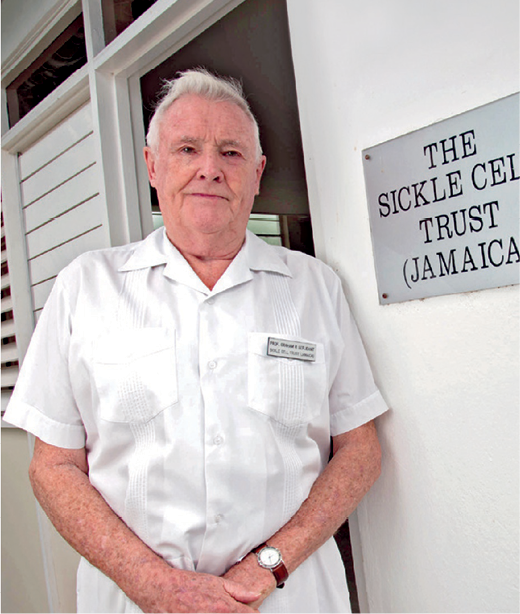The recent moving account “How a call to action will revolutionize sickle cell disease” in The Hematologist1 prompted me to write this review of Professor Graham Serjeant's memoir Sickle Cell: Jamaica and Beyond: A Life. The book details his life which he dedicated to alleviating suffering caused by sickle cell disease (SCD), and “revolutionizing” its treatment.
Graham and his wife Beryl arrived in Jamaica from England in 1966. Soon after arriving, they realized Jamaica's potential for undertaking a long-term study of SCD. In addition to clinical responsibilities, they began their cohort study in 1973 with neonatal screening at Kingston's Victoria Jubilee Hospital, to identify children with SCD and a control group with normal hemoglobin. In total, the cohort study comprised 788 subjects, including 250 controls. About 80 individuals from each group received follow-up in 2021, almost 50 years after the study began – a tribute both to cohort members and the researchers.
The book is a story of outstanding international achievements in which dedication, passion, ingenuity, and creativity shine through, influencing clinical work, research, campaigning, education, and drawing in of financial resources. It is about fighting a cause and never giving up. Work in the field of SCD has been more than just a career for Graham – it has been a vocation, a true calling, and it still is. Graham is still analyzing data, writing papers, working with colleagues internationally, and advising patients and others about SCD. So much has sickle cell been part of his identity that the book is peppered with technical details of its various genotypes, phenotypes, laboratory tests, and clinical complications. Although details about his international SCD travels are perhaps a little excessive — such as the brand of champagne served on a Concorde jet in 1976 and exceeding the speed limit in a Toyota Land Cruiser in Oman — they certainly add color to his story and convey his warmth, humor, and sense of fun. I smiled my way through much of the memoir, and laughed out loud at some points, including anecdotes about food, trains, cars, bathrooms, lavatories, hotels, and houseboats. I also learned a lot, about all sorts of things, from busutis (long dresses worn by women in Uganda), to the Pearl Monument in Bahrain, skiing in Dubai, the changing status of women in many Islamic countries, and the importance of understanding the current political significance of emblems of your host country when using them as illustrations for your lectures.
Graham exemplifies how to be a doctor, the art as well as the science of medical practice, showing respect and dignity for those he meets, whether heads of state or colleagues or patients, and regardless of social class, skin color, gender, etc. Sickle Cell: Jamaica and Beyond: A Life is thus a particularly important book for medical students and doctors in training who are considering their future careers. It is also motivating for policy-makers who are attempting to implement a revolution in SCD care and treatment. By recounting what has so far been achieved in a career dedicated to SCD, it gives inspiration and hope about what can be achieved in the future.
I was fortunate enough to spend my medical student elective working with Graham in Jamaica in 1983, and to return there in 1994 to research psychiatric complications of SCD. I remember him sitting with me, a medical student, to help me start a small research project, not just telling me what to do. I also remember a meal at Graham and Beryl's house one evening in 1994 when he received a phone call from a young participant in the cohort study: The young man wanted advice about managing his deceased father's will. Graham's magnanimous nurturing, respect, patience, and kindness towards patients, their families, junior colleagues, and others has been something I have sought to emulate in my own work. A flavor of his inspirational practice is embedded in the book. You, too, can learn from it.
Competing Interests
Dr. Hilton indicated that she worked with Graham Serjeant at the Sickle Cell Unit in Jamaica, from January to March of 1983, and January to May of 1994.

